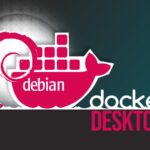Were you unable to attend the Fedora Linux 40 Release Celebration? No need to fret, as we have all the details right here! This article serves as your go-to resource for catching up on the fantastic advancements since the major release. From fresh features to downstream upgrades and hardware partnerships, Fedora Linux 40 is brimming with exciting updates.
Fedora Linux 40 has officially landed, bringing a wealth of updates to cater to desktop enthusiasts and enterprise users alike. Whether you’re captivated by the polished new GNOME 44 experience in Fedora Workstation, the cutting-edge KDE Plasma 6 in Fedora KDE Spin, or the expanded range of Fedora Atomic Desktops, there’s something for every user. This release signifies Fedora’s step into the AI/ML developer domain with the inclusion of PyTorch and ROCm 6 support for AMD hardware, alongside numerous behind-the-scenes enhancements for improved performance and security. Let’s delve further into the sections below to unveil the variety of changes and innovations that accompany Fedora Linux 40.
Core Enhancements and Downstream Progressions Unpacked!
Fedora Workstation
Experience heightened productivity with Fedora Workstation 40, featuring an overhauled Files app, streamlined Settings, smoother app functionalities, and a fresh visual aesthetic for everyday applications. Explore Fedora Linux 40 to witness the transformation!
Fedora KDE
Explore the world of Fedora KDE 40, brimming with exciting updates that make this customizable Fedora Linux iteration a must-try. Satiate your curiosity by diving into the “What’s New in Fedora KDE 40” article!
Fedora Atomic Desktops
Fedora 40 ushers in significant enhancements to its Atomic Desktop offerings. Discover the latest in Silverblue with GNOME 44 and faster updates on Fedora Magazine. Meanwhile, Fedora Kinoite embraces KDE Plasma 6 in a Wayland-only environment, complete with pre-installed KDE apps and a plethora available on Flathub. Learn more about these developments in the “What’s New in Fedora KDE 40” article. Moreover, Fedora Sway Atomic (formerly Sericea) now includes wlroots 0.17, enhancing performance and introducing new features. For detailed information, visit the Sway release page. Lastly, Fedora Budgie Atomic (formerly Onyx) showcases the latest Budgie Desktop 10.9 with Wayland support and various enhancements. Explore the Buddies of Budgie blog for further insights! The evolution of Fedora’s Atomic Desktops doesn’t end there; Fedora Linux 40 introduces Fedora Bootable Containers, a next-generation initiative simplifying the creation and management of customized image-based Fedora Linux systems.
Fedora Bootable Containers
Fedora Bootable Containers streamline the process of building custom Fedora images using familiar container tools. Notable improvements include native OCI/Docker container support, the new bootc tool for streamlined building, enhanced infrastructure for system management, and two new Fedora IoT image options. To learn more about how bootable containers are revolutionizing image-based systems in Fedora, refer to the Fedora bootable containers article.
Fedora Asahi Remix 40
Experience Fedora Asahi Remix 40, extending Fedora Linux 40’s offerings to Apple Silicon Macs. This remix features OpenGL 4.6 support for enhanced graphics, KDE Plasma 6 as the default desktop, a custom setup wizard, and multiple variants to suit diverse preferences. Immerse yourself in the world of Fedora on your Apple Silicon Mac with Fedora Asahi Remix 40!
Downstream Updates: Expanding Fedora’s Reach
Beyond the core updates, Fedora Linux 40 serves as a catalyst for a flourishing ecosystem of downstream projects and innovative hardware collaborations, broadening Fedora’s horizons. Prepare to explore how initiatives like Universal Blue and Ultramarine are pushing boundaries, and hardware vendors like Slimbook and Framework are ushering Fedora Linux into cutting-edge devices.
Universal Blue Images Based on Fedora Linux 40
- Universal Blue focuses on crafting Fedora Linux-based operating systems tailored for specific purposes. Explore uBlue, a versatile distribution suitable for both novice and expert users, along with its specialized counterparts:
- Bluefin: Streamlining containerized development with a GNOME layout akin to Ubuntu and productivity-enhancing extensions.
- Aurora: Offering a KDE-flavored version of Bluefin for users seeking a customizable desktop environment.
- Bazzite 3.0: A significant upgrade for Linux gaming featuring Fedora Linux 40, KDE Plasma 6 or GNOME 46 options, enhanced hardware support, and optimized gaming performance for handheld and desktop platforms.
BlueBuild
- BlueBuild, a project stemming from Universal Blue, empowers users to create custom Fedora images effortlessly. With its recipe-based system, modular design, enhanced build system, and upcoming keyless signing, customization is a breeze. The revamped BlueBuild tool, with its new Rust-based CLI and streamlined template, is ideal for tailoring your optimal Fedora experience.
Ultramarine 40
- Ultramarine 40, also known as “Lost Umbrella,” introduces new features to this Fedora Linux remix. It includes a lightweight Xfce edition for low-powered devices, expanded Chromebook and Raspberry Pi support through the Ultramarine Anywhere initiative, and enhanced download speeds via new mirrors. Explore the boundaries of Ultramarine 40 and discover its vast possibilities!
CentOS Stream 10 & RHEL 10
- Fedora Linux 40 acts as the foundation for the next phase of enterprise Linux, fueling innovation, stability, security enhancements, and new features in CentOS Stream 10 and Red Hat Enterprise Linux (RHEL) 10. This advancement signifies a significant stride forward for the enterprise Linux landscape, providing a dependable and secure platform for critical workloads.
Fedora Linux on Various Hardware: Fresh Possibilities
Aside from software enhancements, Fedora Linux 40 is revolutionizing the hardware experience. Let’s delve into the exciting developments in this arena.
The Slimbook Fedora 2 laptops have made their debut, showcasing a sleek black magnesium chassis variant, multiple keyboard layout options (including US ANSI), and enhanced performance with Intel’s 13th Gen i7 processor. The 16-inch model offers an Nvidia RTX 4000 series GPU for demanding tasks. These laptops come preloaded with Fedora Workstation 40, featuring GNOME 46 and the latest Nouveau drivers. Slimbook’s dedication to open source is apparent through their 3% donation to the GNOME Foundation from proceeds, along with exclusive discounts for Fedora contributors.
Fedora contributors can relish exclusive discounts, while everyone can save €150 on the previous model.
Tailored Bluefin & Bazzite for your Framework Laptop
Fedora Linux 40 is expanding its hardware compatibility scope, with the Universal Blue team collaborating to bring their acclaimed Fedora Linux-based distributions—Bluefin and Bazzite—to Framework 13 and 16 laptops with official community support. These customized distributions offer seamless dGPU switching for FW16 models, automatic power profile shifts, fractional scaling, fingerprint reader compatibility, and VRR (for Bazzite users on FW16). Moreover, users can easily share their Steam Deck MicroSD card with their Framework laptop and unlock LUKS encryption using their fingerprint. Dive into the specifics of this exciting collaboration on the Universal Blue forum!
This comprehensive overview encapsulates the essence of Fedora Linux 40, spanning software enhancements, downstream initiatives, and hardware partnerships. Whether you’re a developer, gamer, or open-source enthusiast, Fedora Linux 40 has something special in store for you. Embark on an exploration, engage with the community, and immerse yourself in the world of Fedora!











